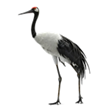🌿 Thank you for visiting BirdWatch Zambia! Our website is currently undergoing maintenance.


We appreciate your patience during this time and apologize for any inconvenience. If you have any urgent inquiries, please reach out to us at andrew.mbenjile@birdwatchzambia.org.
 Stay Connected
Stay Connected 
Follow us on our social media channels for updates and birdwatching tips while we work to improve our site!
Thank you for your understanding, and we look forward to welcoming you back soon!